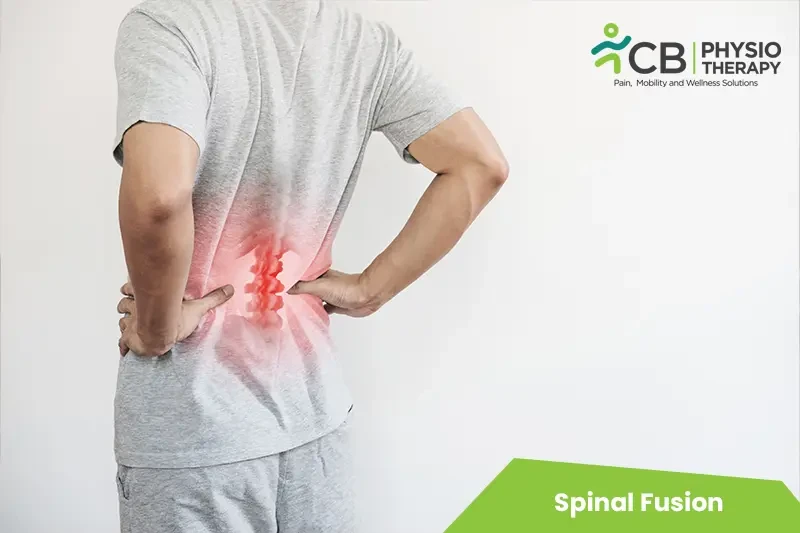Rest:Excessive mobility and stress on the tissues should be avoided to enhance healing.
Cryotherapy:Ice therapy is used to help decrease swelling and pain at the surgical site and is applied for 20 minutes several times a day.
Thermotherapy:Heat therapy is used to help to improve circulation and relax the muscles.
TENS:Transcutaneous electrical stimulations may be used to help relieve pain.
Simple range of Motion Exercises:These exercises help the muscles to maintain the stability of the spine and reduce stress through the surgical site by active stabilization. Range of motion exercises promotes blood circulation, bringing oxygen required for tissue healing and healthy bone growth.
Short walks:After surgery short walk is recommended for the patients, they should get out of bed and walk the first day after surgery, frequent walking throughout the initial recovery period, and further increase the amount and length of the walks as tolerated.
Stretching Exercises:Stretching exercises should be done such that the patient should feel the stretch, but not to the point of pain, If pain is felt stretching should be stopped. It promotes flexibility as due to inactivity, range of motion can be lost. Gentle stretching exercises for the core back and abdominals and hip muscles will make all the movements easier. But care should be taken not to do it too aggressively.
Hamstrings and quads Stretching:Stretching of these muscles should be done slowly with a 30-second hold, 3 times in 2 sets per day. For hamstrings, sit in a chair and straighten one leg in front with toes pointed up and knees straight. Push the belly forward to move into a stretch while keeping the chest high. For the quadriceps, lie on the stomach, and bring the heel toward the buttocks as far as possible.
Nerve stretches:Nerve stretches should be done in two hours, without holding for long. A nerve stretch is done by lying on the back with legs on the ground, and slowly lifting one leg until a stretch is felt in the back of the thigh. Support the raised leg with hands behind the knee, and pump the ankle while holding the knee still. Or lie on the back, and bend both knees. Slowly straighten one leg and push the heel toward the ceiling until a stretch is felt. Alternate stretching each leg.
Static Stabilization Exercises:These movements are done without moving the trunk and should be completed by moving arms and legs while avoiding any rocking or arching of the lower trunk.
Pelvic Tilt:The patient lies on the back of the floor with knees bent and pulling the belly in towards the spine, keeping the lumbar spine stable.
Strengthening Exercises:More advanced exercises should be added to strengthen the back structures and increase overall fitness. Patients can add more rigor and variety by using an exercise ball or resistance bands.
Mat Exercises:Abdominal strengthening
The patient lies on the floor with knees bent, curls the trunk by raising the head and one shoulder towards the opposite hip a few inches, then extend the back by alternating the limbs, while on hands and knees, raise one arm and opposite leg, then alternate.
Band Movement:Strengthen the abdominals and oblique muscles
Resistance bands are commonly used for strength training. Pull with the band, anchored low to the ground, and feet shoulder-width apart, grasp the band and pull from the lower right to the left shoulder.
Exercise Ball Movement:An exercise ball maximizes the range of motion but staying in control is more important while using an exercise ball. Exercise should be performed until fatigue is evident or control becomes difficult. Each set should last 30 to 60 seconds, 1 set a day is usually recommended.
Ball Marching:The patient sits on the exercise ball, slowly raising one arm and the opposite leg, reverse.
Another exercise is the patient lies with the stomach on the exercise ball and hands/ arms in front, walk forward on the ball until it rests under the thighs, then raises one leg at a time.
The next option is with the stomach on the exercise ball, and knees on the ground, walk straight out on the hands, but don't let the trunk twist or dip down.
Aerobic Exercises:Aerobic exercises like stationary biking, stair climbing, elliptical training, or brisk walking for at least 20 minutes helps to increase blood flow and oxygen also burn excess calories, help to maintain weight, and prevent added stress on the back structures and surgical site.
